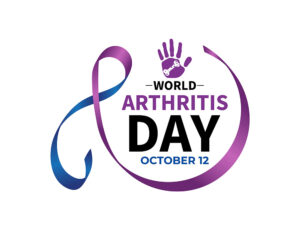As the seasons shift from the vibrant hues of autumn to the frosty landscapes of winter, Pacific Arthritis recognizes the distinctive challenges faced by individuals living with rheumatoid arthritis. The colder temperatures, fluctuations in atmospheric pressure, and diminished sunlight can significantly impact joint health, potentially intensifying RA symptoms. In this blog, we’ll delve into how the autumn and winter months can influence those with rheumatoid arthritis, elucidate the changes to anticipate, and underscore lifestyle adaptations and self-care practices tailored for improved joint health during these seasons.
The Impact of Autumn and Winter on Rheumatoid Arthritis
- Temperature Sensitivity. Cold temperatures can heighten stiffness and discomfort for our patients with rheumatoid arthritis. The Pacific Arthritis team recognizes the challenges posed by the thickening of synovial fluid in joints during colder weather, affecting movement and potentially triggering inflammation.
- Barometric Pressure Changes. Our experts understand the impact of barometric pressure shifts on joints. We acknowledge that falling pressure, often heralding rain or snow, may lead to the expansion of tissues around joints, contributing to increased pressure and potential pain.
- Reduced Physical Activity. Pacific Arthritis emphasizes the importance of maintaining physical activity, even during the colder months. Our specialists recommend indoor exercises tailored to individual needs, ensuring our patients retain joint flexibility and strength.
- Vitamin D Deficiency. With shorter days and decreased sunlight exposure, Pacific Arthritis recognizes the relevance of vitamin D deficiency. Our team advises on the importance of maintaining optimal levels of this crucial vitamin for bone health and inflammation modulation.
Lifestyle Changes for Improved Joint Health
1. Stay Active with Indoor Exercises. Combat the temptation to hibernate by incorporating indoor exercises into your routine. Low-impact activities like yoga, swimming, or even home-based strength training can help maintain joint flexibility and strength.
2. Dress in Layers. Layering is not just a style choice; it’s a strategy for managing temperature sensitivity. Dressing in layers allows you to adjust your clothing to the changing temperatures throughout the day, helping to keep your joints comfortable.
3. Maintain a Warm Environment. Keep your living spaces comfortably warm. Warmth can soothe joints and alleviate stiffness. Consider using heating pads, blankets, or even a warm bath to ease joint discomfort.
4. Stay Hydrated. Cold weather can sometimes lead to dehydration, which may contribute to joint stiffness. Ensure you’re drinking enough water throughout the day to keep your joints and tissues well-hydrated.
5. Mind Your Diet. Focus on an anti-inflammatory diet rich in fruits, vegetables, and omega-3 fatty acids. These can help reduce inflammation and support overall joint health. Consider consulting a nutritionist for personalized dietary advice.
6. Vitamin D Supplementation. Given the reduced sunlight exposure during the darker months, consider vitamin D supplementation. Your healthcare provider can guide you on the appropriate dosage to maintain optimal levels.
7. Manage Stress. Stress can exacerbate RA symptoms. Engage in stress-reducing activities such as meditation, deep breathing exercises, or hobbies that bring you joy. Managing stress is an integral part of supporting overall well-being.
8. Regular Check-Ins with Your Rheumatologist. Autumn and winter may warrant adjustments to your treatment plan. Regular check-ins with your rheumatologist allow for proactive management, ensuring that your medications and strategies align with the seasonal challenges.
9. Socialize and Stay Connected. The colder months can sometimes lead to social isolation. However, maintaining social connections is crucial for mental well-being. Whether in-person or virtually, staying connected with friends and family can provide emotional support.
10. Prioritize Sleep. Quality sleep is essential for overall health, especially for individuals with rheumatoid arthritis. Establish a sleep routine and ensure your sleeping environment is comfortable and conducive to rest.
Embracing Joint Health Through the Seasons with Pacific Arthritis
As autumn and winter unfold, Pacific Arthritis stands alongside individuals with rheumatoid arthritis, offering a perspective rooted in expertise and compassion. We believe in navigating the seasonal challenges with resilience, embracing the beauty of changing seasons while prioritizing joint health. Our collaborative approach ensures that patients receive personalized care, empowering them to manage rheumatoid arthritis effectively throughout the year.




